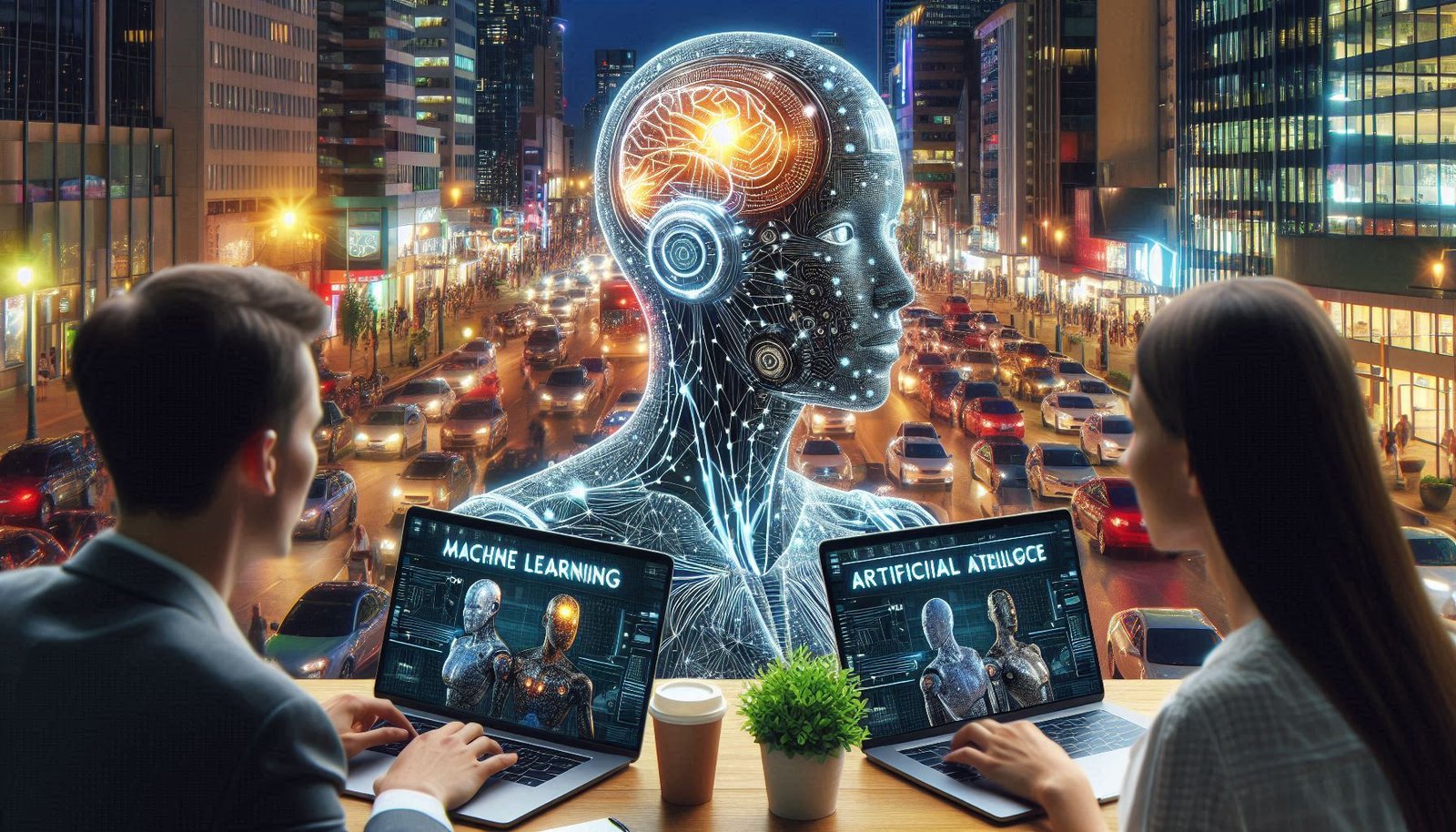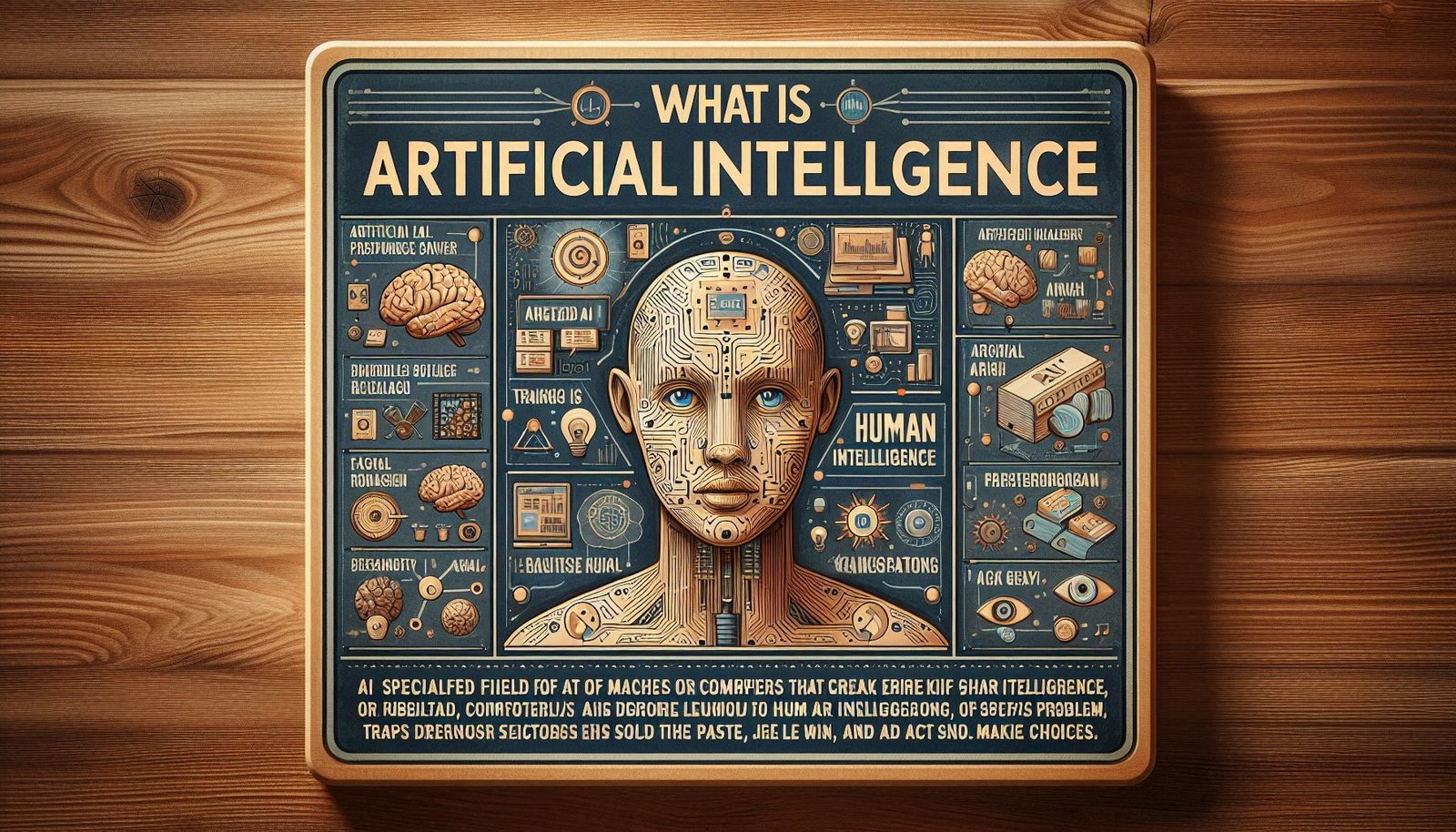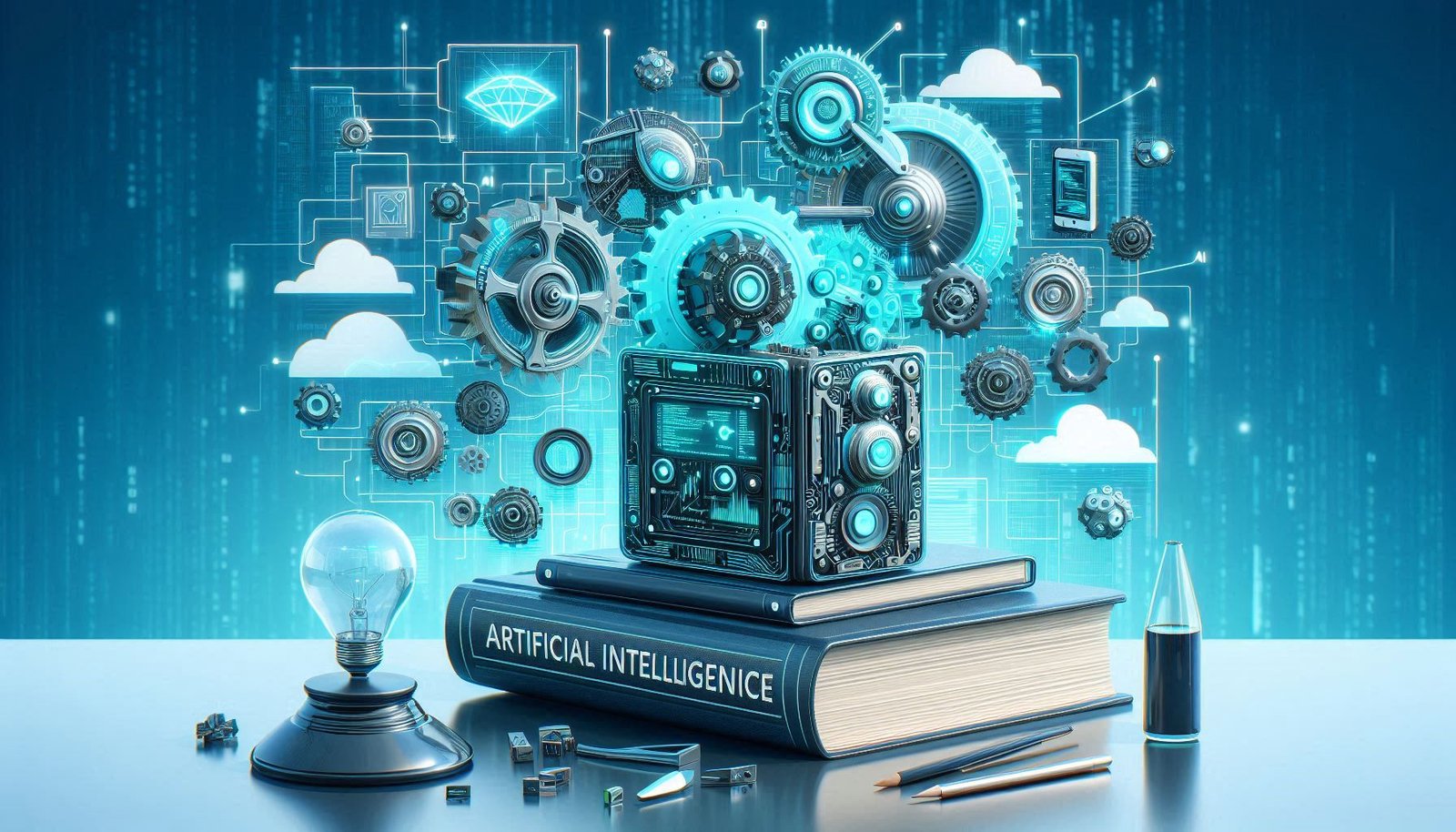In the realm of tech, using the terms Machine Learning (ML) and Artificial Intelligence (AI) are now commonplace. They are similar, but not identical. While a lot of people use them interchangeably, there’s quite a bit of difference which makes each of uniquely made. This article will touch on the relationship between AI and ML, its role, and the interaction between those two that would create the future of technology. lets discuss Is Machine Learning and AI the Same.

Table of Contents
ToggleUnderstanding Artificial Intelligence
What is Artificial Intelligence?(Is Machine Learning and AI the Same)
AI (Artificial Intelligence)Specialised field of machines or computers for tasks that require human intelligence typically. It aids in problem-solving, draws lessons from the past, and helps in making choices. To put it simply, AI is making machines think and act like us.
AI can be classified into two main categories:
- Narrow AI (Weak AI) – AI trained to provide a solution to a specific problem, i.e., facial recognition or translating languages.
- General AI (Strong AI) – An AI that can accomplish any intellectual task that a human can. General AI is still theoretical and has not been achieved yet.

Key Features of AI:
- One: Automation: AI can perform routine tasks on its own.
- AI can help decision making by helping to make informed decisions by processing data.
- But AI can learn from experience and adapt to changing circumstances.
What is Machine Learning?
All You Need to Know About Machine Learning
Machine-learning (ML) — which is one of the three approaches people use to create AI (the other two are neural networks and deep learning) — is all about training algorithms to learn from data without relying on a set of rules that the machine needs to follow. This involves developing algorithms that allow systems to identify patterns and make decisions based on data.
Types of Machine Learning:
- The machine is trained on labeled data (data that has both inputs and outputs).
- Example: A system that predicts house prices based on features like size, location, etc.
- The machine works with unlabeled data and finds hidden patterns.
- Example: Grouping similar customers based on purchase history (clustering).
-
Reinforcement Learning:
- This teaches the system through trial and error where it is rewarded or punished based on its actions.
- For instance: Teaching a robot to navigate through a maze.
-
Semi-Supervised Learning:
- Used in the field of Semi-Supervised Learning to merge the positive and unlabeled data.
- For Example: Classifying a large set of unlabeled images based on a small set of labeled images.
Key Features of Machine Learning:
- Data focused: ML makes highly accurate predictions, but it requires large amounts of data to learn.
- Enhanced over time: The more ML algorithms you expose to data, the more proficient they become at executing tasks.
Is Machine Learning a Part of Artificial Intelligence?
AI is Machine Learning
Yes, machine learning is part of artificial intelligence. [Note: AI is a broad term that can refer to various technologies: machine learning is the specific technical method that builds intelligent systems that can learn from data. AI systems would not be able to signind beyond the programming without ML.
To simplify, all machine learning is AI, but not all AI is machine learning. Intelligence can be achieved through Machine learning but AI is also a combination of the concept of rules-based systems and expert systems.

The Role of Machine Learning in AI:
- Improving decision making: Through past data assimilation, ML algorithms enable AI systems to make more informed decisions.
- With ML, AI can identify patterns within complicated data patterns with high accuracy.
- Enabling automation: With ML, AI can automate tasks that integrate cognitive functions.
What Makes Machine Learning Different from Artificial Intelligence
| Feature | Artificial Intelligence | Machine Learning |
|---|---|---|
| Definition | AI involves machines performing tasks that would typically need human intelligence. | ML is a subset of AI that uses data to enable machines to learn from experience. |
| Focus | Emulates human intelligence. | Focuses on learning patterns from data to make predictions. |
| Scope | Broad, includes different technologies like robotics, NLP, etc. | Narrow, focuses solely on algorithms and data patterns. |
| Learning Method | Can use reasoning, rules, and knowledge-based systems. | Uses statistical methods to learn from data. |
| Goal | To simulate human-like intelligence in machines. | To create algorithms that can improve with experience. |
| Applications | Virtual assistants, self-driving cars, robotics. | Fraud detection, recommendation systems, predictive analytics. |
Is All Machine Learning AI?
So while machine learning is a subset of artificial intelligence, not all machine learning is artificial intelligence. AI is not limited to machine learning, because there are other parts of it like expert systems or symbolic reasoning.
To simplify:
- You can think of Machine Learning as a way to implement AI.
-
AI: The general quest for intelligent systems, with or without machine learning.
What is Machine Learning in Artificial Intelligence?
Integrating Machine Learning into AI
Machine Learning: one of the foundational approaches for building an AI. Using machine learning, AI applications can perform tasks such as:
- Machine Learning: Supervised, Unsupervised, Reinforced, etc.
- Computer Vision are machines can label the objects and understand the visual information.
- Up to date till October 2023 These include
This is how machine learning algorithms in AI enable these systems to identify patterns, make predictions, and improve their performance over time based on their experience.
Is Machine Learning Worth It?
Why Should You Care About Machine Learning?
Machine learning will provide you with a strong understanding of the fundamentals that can be applied in virtually any business, and it is absolutely something you should learn in your career if you are dealing with considerably large data or you want to automate some processes. Key reasons that make it worth investing in machine learning:
- Automation: ML helps automate repetitive tasks, saving time and resources.
- Accuracy: ML can often make accurate predictions, particularly for data-driven processes.
- Scalability: machine learning models can adapt and scale with traffic/factors related to more data.
- Decisions in Real-time: Machine learning allows businesses to make fast, informed decisions because it can process big data in real time.
Nevertheless, it must be emphasized that machine learning, though very potent, is data and computational resources demanding. This makes machine learning systems strongly dependent on data size and quality.
FAQs
1. What is the difference between AI and machine learning?
-
AI is the catchall term for machines doing things that, like, normally require human intelligence, and machine learning is a more specific thing in AI that empowers machines learn from data and improve their performance over time.
2. Can a machine be intelligent without machine learning?
-
A machine can be made to imitate intelligent behavior using other AI techniques, for instance with expert systems or symbolic reasoning, but machine learning is one of the most robust methodologies available.
3. Are AI and machine learning used together?
-
Yes, but the three terms refer to the idea or concept of the machine domain and are less or not trained on machine data. Artificial intelligence (AI) systems are commonly algorithms that through the process of machine learning, are designed in such a way that they can learn by data and adapt their decision-making process accordingly.
4. Is machine learning difficult to understand?
-
Machine learning is complicated but can be grasped with the right instructions. Fortunately, there are many beginner-friendly tutorials available for those interested in learning more.
5. What are some examples of machine learning in real life?
- Some real-life examples of machine learning include:
- Recommendation systems on platforms like Netflix and Amazon.
- Fraud detection systems in banking.
- Voice assistants like Siri and Alexa.
Conclusion
Machine learning and artificial intelligence are not the same thing, but they are closely related. Machine learning is an important, but not the only, piece of what AI is — there are techniques in AI that do not involve machine learning at all. Machine learning is the most valuable aspect of modern AI development as it helps the AI systems learn from the data and enhance their capabilities with time.
By understanding the differences between these two concepts, you can get a deeper appreciation of each of their roles and how they come together to drive progress in the field of technology. AI is the umbrella term that encompasses machine learning, deep learning, and NLP; ML is the most recent and scalable way to move AI forward, and the two are so intertwined that there can be confusion about differences between them and their approaches.
[…] yes for the answer! Self-learning machine learning is certainly doable, albeit with time, dedication, and effort. So, in this article, we will […]
[…] Yes, C++ can be used for machine learning. However, it is less used for this task than, say, Python or R. Machine Learning is compute-heavy […]